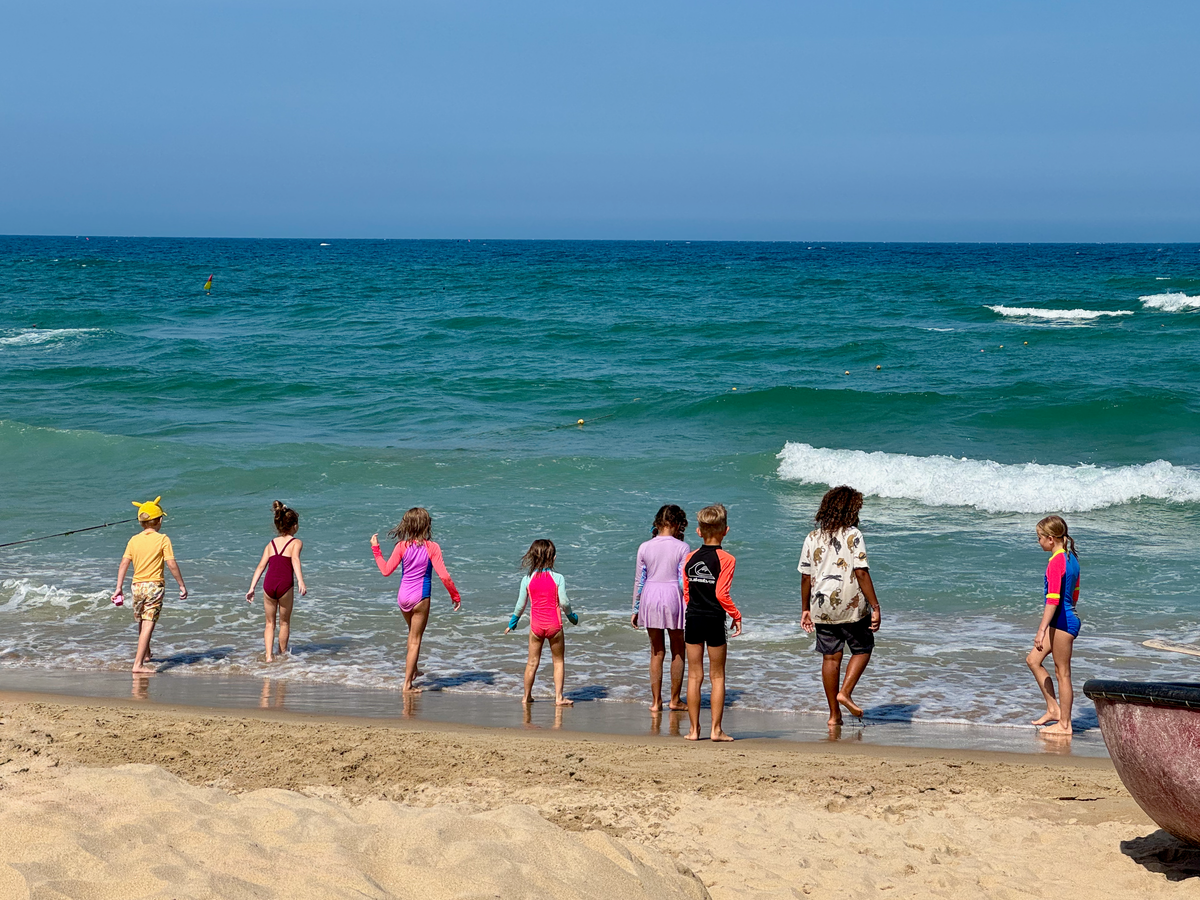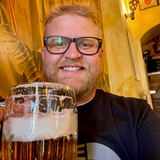Slow Travel: How We Learned to Stop Moving and Love Staying Put
After Bangkok, we established what became known as the "one-week minimum rule" – we would never stay anywhere for less than seven days, and would aim for 10-14 days whenever possible.

When we first set sail on the Queen Mary 2 in May 2022, we were armed with ambitious itineraries, color-coded spreadsheets, and the naive belief that we could see everything, everywhere, all at once. Looking back now, nearly three years into our worldschooling adventure, we realize we were doing travel all wrong – but in the most wonderfully educational way possible.
The Great European Sprint of 2022
Our initial approach to travel was what I now lovingly call "the checklist method." We'd arrive in a new city, immediately start ticking off the must-see attractions, snap photos at every landmark, and then rush off to the next destination after just 3-4 days.
During our first few months in Europe, we ping-ponged between Southampton, London, Paris, the French Riviera, Genoa, Lucca, Naples, Munich, Prague, Vienna, and Budapest like caffeinated tourists with something to prove. We were essentially playing travel bingo, collecting passport stamps and Instagram posts while barely scratching the surface of these incredible places.
Don't get me wrong – we had amazing experiences during this whirlwind period. Harper's third birthday in Lucca was magical, our brewery tour in Munich was unforgettable (complete with traditional Dirndls for the girls), and watching the girls' faces light up at Paris Disneyland was priceless. But we were exhausted, constantly packing and unpacking, and missing out on the deeper connections that make travel truly transformative.
The Bangkok Revelation
Everything changed when we arrived in Bangkok on August 6, 2022, after that incredible Saudia Airlines deal (first-class lay-flat seats for $2,000 for the whole family – still can't believe we scored that). We had planned to stay for just a week before moving on to our next destination, but something unexpected happened: we fell into a rhythm.
For the first time in months, we weren't frantically researching the next city or calculating train schedules. Instead, we discovered our local coffee shop, found the best pad thai vendor (spoiler: it was the one with the longest queue of locals), and watched the girls make friends with other expat kids at the playground. We stayed for 28 glorious days, and it was during this extended stay that we had our slow travel epiphany.
Those four weeks in Bangkok taught us more about Thai culture, gave us deeper connections with locals, and provided more genuine rest and rejuvenation than all our previous quick stops combined. We realized we'd been skimming the surface of countries like a stone across water, when what we really wanted was to dive deep and truly immerse ourselves.
The One-Week Minimum Rule
After Bangkok, we established what became known as the "one-week minimum rule" – we would never stay anywhere for less than seven days, and would aim for 10-14 days whenever possible. This decision ultimately inspired our "One Week In" YouTube series, where we showcase what families can realistically experience in a week-long stay.
This shift in mindset transformed our travels. Instead of racing through attractions, we could take rest days when the girls needed them. We had time to discover the neighborhood bakery, figure out public transportation, and even have mundane experiences like grocery shopping – which, surprisingly, became some of our most educational moments about local culture.
Our two-week stay in Siem Reap, Cambodia, perfectly exemplified this new approach. We had time to visit Angkor Wat multiple times (because the girls wanted to see the sunrise, but also wanted to sleep in), build relationships with our incredible tuk-tuk driver, and truly understand the complex history of the region. Those extra days allowed for spontaneous discoveries that never would have happened during a rushed three-day stop.
Embracing the Homebase Concept
As we've continued to evolve our travel style, we've increasingly embraced what we call the "homebase" approach. This concept really crystallized during our four-month stay in Chiang Mai in 2024, where we wrote our upcoming book and developed new worldschooling content while taking shorter trips to explore the region.
The homebase model offers the best of both worlds: stability for deep work, relationship building, and routine (which our girls desperately needed for their education), combined with the excitement of exploration through shorter trips to nearby destinations. From our Chiang Mai base, we could easily visit temples in the mountains, explore night markets, and take weekend trips to other parts of Thailand.
But it was our six-month winter sojourn in Da Nang, Vietnam, that really proved the power of the homebase concept. What started as a planned two-month stay extended to half a year because we found ourselves part of an incredible community of worldschooling families. The girls had consistent friendships, we had our favorite restaurants and routines, and we used Da Nang as a launching pad for longer trips to Hong Kong and other regional destinations.
The Magic of Mundane Moments
One unexpected benefit of slow travel has been discovering the magic in mundane moments. When you're not constantly rushing to see the next tourist attraction, you have time to appreciate the small details that make each place unique: the way vendors arrange their fruit at the local market, the sound of the call to prayer echoing through the streets, or the particular shade of blue used on doors in a Mediterranean village.
These moments can't be photographed or checked off a list, but they're what transform travel from sightseeing into genuine cultural immersion. When Harper confidently orders her favorite Thai dish in broken Thai, or when Lily helps a local child with their English homework at a playground, we know we've achieved something deeper than tourism.
Finding the Sweet Spot
After nearly three years of experimentation, we're still fine-tuning our approach to travel pacing. We've learned that the optimal stay length varies dramatically depending on the destination, our goals, and our energy levels. A bustling metropolis like Tokyo can hold our attention for months, while a small beach town might be perfect for a two-week reset.
We've also discovered that our travel style needs to accommodate different types of experiences. Sometimes we want the deep cultural immersion that comes with a six-month homebase. Other times, we crave the excitement and energy of exploring new destinations every couple of weeks. The key is being intentional about our choices rather than defaulting to constant movement.

The Future of Our Travels
As we look ahead to our upcoming plans – a few months in Japan, a visit to family in Indiana, a rail journey through central Europe, and potentially settling into Albania for six months – we're approaching these decisions with the wisdom gained from our evolution toward slow travel.
We're no longer trying to see everything or optimize every moment. Instead, we're focusing on creating space for both planned adventures and spontaneous discoveries. We want to give ourselves permission to fall in love with a place and stay longer than planned, or to recognize when it's time to move on even if we haven't checked every box on our list.
The beauty of slow travel isn't just that it's less stressful (though it absolutely is). It's that it creates space for the unexpected connections, deeper understanding, and genuine rest that make long-term travel sustainable and meaningful.
Our daughters are learning that travel isn't about collecting passport stamps or Instagram posts – it's about openness to new experiences, adaptability, and finding home in unexpected places. These are lessons that will serve them well long after our worldschooling adventure ends.
Whether you're planning your first long-term family trip or you're already on the road, we encourage you to experiment with slowing down. Give yourself permission to stay put when a place captures your heart. You might be surprised by what you discover when you stop moving long enough to really see where you are.
Planning your own slow travel adventure? We'd love to help you design an itinerary that balances exploration with rest. Contact Lindsay at lindsay@clarksontravels.com for personalized travel planning services.





